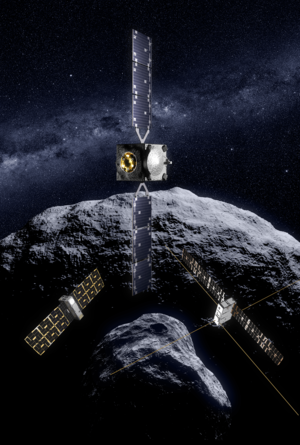
Hera asteroid mission’s shaker testing
How could the Hera mission team become certain their asteroid-explorer spacecraft was robust enough to be flown into space aboard a rocket? They took their spacecraft and shook it bodily, replicating the kind of vibrations it will experience on the day of launch.
The spacecraft is seen here on the ESTEC Test Centre’s 640kN QUAD shaker, whose metal plate is moved vertically by a quartet of water-cooled electrodynamic shakers.
At approximately 3000 sq. m in area, ESA’s ESTEC Test Centre in Noordwijk, the Netherlands, is the largest satellite testing establishment in Europe, equipped with facilities to simulate every aspect of launch conditions and the orbital environment.
Hera is Europe’s contribution to an international planetary defence experiment. Following the DART mission’s impact with the Dimorphos asteroid last year – modifying its orbit and sending a plume of debris thousands of kilometres out into space – Hera will return to Dimorphos to perform a close-up survey of the crater left by DART. The mission will also measure Dimorphos’ mass and make-up, along with that of the larger Didymos asteroid that Dimorphos orbits around.
Hera is scheduled for launch in October 2024, to rendezvous with the Didymos and Dimorphos asteroid system about two years later.
The Hera spacecraft was developed and built for ESA by OHB System AG.






